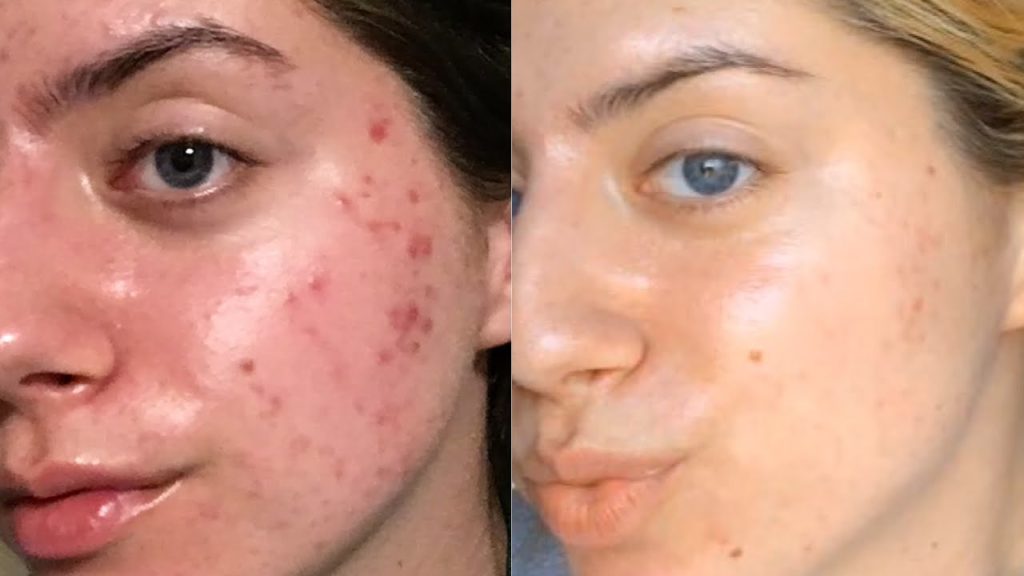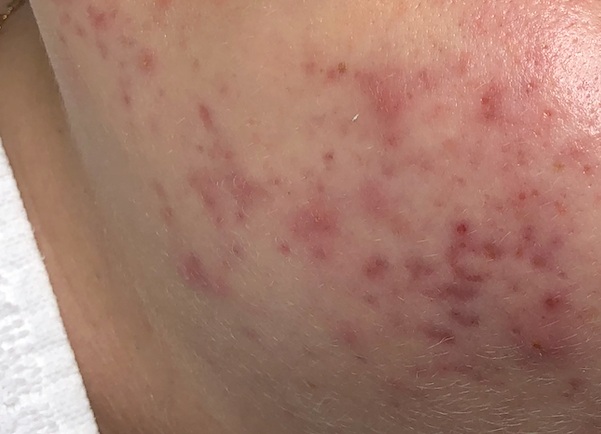Post-inflammatory erythema is the red or pink spot that forms after a pimple is gone.
Here are some treatments to help rid those post-acne spots.

The following written content by Emily DiNuzzo
Post-inflammatory erythema is the red or pink spot that forms after a pimple is gone. Here’s are the treatments that can help you get rid of these post-acne red spots.
The aftermath of acne
Finding a skin care and treatment routine that limits acne breakouts is a challenge, and it can take lots of trial and error to get it right. Once you do have yours down-pat and acne is under control, it can feel like you hit the complexion jackpot.
That said, many people will still have acne scars and lingering marks that are reminders of pimples past.
One type of mark you may not realize you have is post-inflammatory erythema (PIE).

Here’s what dermatologists want you to know about how these marks form, why they’re not “true” acne scars, and the best ways to prevent and treat them.
What is post-inflammatory erythema (PIE)?
Post-inflammatory erythema is the red or pink spot left over after an acne spot fades away. It’s flush with the skin, so there’s no acne bump. (Erythema means a reddening of the skin.)
According to board-certified dermatologist Morgan Rabach, MD, of LMMedical in New York City, it’s more likely to occur in lighter skin tones, although it can happen to anyone.
“It’s caused by dilated blood vessels on the area of the pimple,” she says.
Damage to the capillaries (small blood vessels near the skin’s surface) results in these red spots. The term PIE is relatively new in the world of dermatology and only dates back to 2013, according to the Journal of Clinical and Aesthetic Dermatology. So there’s currently only limited research on the condition.
According to board-certified dermatologist Zain Husain, MD, founder of NJ Dermatology and Aesthetics Center, these hyperpigmented flat lesions do not “blanch” when touched.
A mark that blanches—the skin gets lighter after applying pressure because of the temporary obstruction of blood flow—isn’t PIE.
Is PIE an acne scar?
A true acne scar alters the collagen in the skin beneath the epidermis (the outermost layer of the skin), so Dr. Rabach would not consider PIE a true scar.
Dr. Husain agrees and explains that no scar tissue forms in the dermis (the skin layer under the epidermis) of the skin with PIE, another reason it’s not considered a true acne scar.
Still, some treatments for true acne scars overlap with PIE treatments. (We’ll get to those later.)
How to prevent PIE
Dr. Husain says his biggest tip for avoiding PIE is to treat the underlying process. That is, prevent acne in the first place.
Of course, avoiding acne is usually the goal, but it’s a sentiment worth repeating. It may be easier to avoid acne than it is to treat PIE. And never forget the golden rule: don’t pick your pimples.
UV radiation can exacerbate PIE, says Dr. Husain, so protect your skin by wearing a broad-spectrum sunscreen. Read more from RD.





